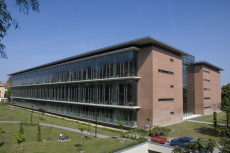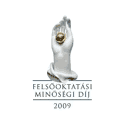Gazdasági és Műszaki Főigazgatóság - Ahol tudás és szándék találkozik
 Anyag/eszköz beszerzések
Anyag/eszköz beszerzések
Call for Proposal No. SZTE/2013/PB0246/E Deadline for submission of offers extended!
The Directorate of Finance and Engineering, University of Szeged (hereafter Inviting Authority) invites candidates to an open procedure for supplying the following product:
Computer controlled 24 channel software/hardware system for experimental control, data acquisition and data processing during neuronal recording experiments
Offer No: SZTE/2013/PB0246/E
Deadline for submission of offers: April 10th, 2013 (3.00 pm)
Estimated Date of delivery: until April 30th, 2013
Specification of product:
Computer controlled 24 channel software/hardware system for experimental control, data acquisition and data processing during neuronal recording experiments
|
I. Hardware requirements: |
|
1. Waveform I/O: 24 channels of 16-bit waveform input, switchable ±5V or ±10V. Up to 48 waveform inputs via expansion units |
|
2 Maximum sampling rate: 1 MHz multi-channel, up to 3 MHz single channel |
|
3. System accuracy and noise: 0.05% of full scale ±1.5 bits |
|
4. Optional programmable gain: x1, x2, x5, x10 |
|
5. Waveform output: 4 channels, 16-bit, switchable ±5V or ±10V |
|
6. Processor: 32-bit Marvell MV78100 processor |
|
7. Read-write memory: 1 Gb, expandable to 2 Gb |
|
8. Digital I/O: 16 digital inputs, 8 with change-of-state detection to µs accuracy 16 digital outputs with handshake lines for byte input and output |
|
9. Synchronisation: Clocks and events; 5 programmable clocks with 100nS resolution BNC socket for clock inputs and event (clock start) connections |
|
10 Host interface: USB 2.0 |
|
11. Dimension: Rack mount for 19 inch laboratory racks |
|
II. Software specification. Acquisition requirements: |
|
1. Enable large data files recording, up to 1TB |
|
2. Different waveform sampling rates per channel |
|
3. Real-time single and multi-unit spike activity capturing and sorting |
|
4. Continuous, internally timed and triggered recording modes |
|
5. Simultaneous, time-locked, multimedia video and sound recording with data recording |
|
6. Up to 8 channels of event data storage with microsecond timing resolution |
|
7. Log accurately timed coded 8-bit digital inputs |
|
8. Annotate data records with text notes and keyboard markers |
|
9. Swap between experiment setups |
|
10. Waveforms calibration with multiple methods including values, areas, slopes |
|
11. Automatic saving and sequencing multiple files with optional trigger start |
|
12. Recover data files in the event of an un-commanded system shutdown |
|
13. Dynamical configuration of programmable amplifiers |
|
|
|
III. Software specification. Processing and analysis requirements: |
|
1. Waveform analyses including averaging, power spectra and waveform correlations |
|
2. Event analyses including INTH, PSTH, auto and cross correlations and phase histograms |
|
3. Automatic finding a data features including triggers and features in evoked, spontaneous activity and cyclical data with 'active' cursors |
|
4. XY plots generation and measurement channels in data files and output tables of values based on cursor feature detection |
|
5. Absolute and relative measurements of positions, data values and inter-cursor statistical measurements with up to 10 active cursors per view |
|
6. Time and amplitude measurements by dragging the mouse pointer |
|
7. Derive 'virtual channels' from existing waveform and event channels defined by user-supplied expressions (channel arithmetic). |
|
8. Generate functions in virtual channels', including sine, square, triangle waves, envelopes and polynomials |
|
9. On- and off-line dynamical waveforms processes: rectify, smooth, DC remove, downsample, median filter and RMS amplitude |
|
10. Create editable temporary channels containing copied or derived data |
|
11. Digitally filter waveforms (FIR and IIR) with interactive filter design |
|
12. Interactively fit data with functions including exponential, Gaussian, polynomial, sinusoid and sigmoid |
|
13. Automate repetitive, multi-step and custom analyses using the script language |
|
|
|
IV. Software specification. Display requirements |
|
1. Review multiple files simultaneously, during on-line sampling |
|
2. Navigate through data files with mouse pan and zoom, axis dragging, scroll bar and keyboard control |
|
3. Display events, spikes and markers as times, rates, mean and instantaneous frequencies |
|
4. Use duplicated channels to display data in different ways and show selected markers and discriminated spikes separately for cross analysis |
|
5. Overlay multiple triggered 'sweeps' with optional 3D display |
|
6. Draw waveforms with optional linear and cubic spline interpolation or as sonograms with preset and user-defined colour scales |
|
7. Draw marker type data in state mode for condition marking. |
|
8. Textmark (text note) channels display, storege in the channel area |
|
9. Vertical marker option |
|
10. Set independent colours for each channel's data and background |
|
11. Arrange vertical space and order of channels displayed, including option to overlay multiple channels |
|
12. Logarithmic axes display option for result and XY views |
|
13. Expand your display area with built-in multiple monitor support |
|
|
|
V Software specification. Experiment control |
|
1. Build waveform profiles and generate digital outputs in an graphical editor |
|
2. Use output pulses to trigger current, voltage and stimulators while simultaneously recording and analyzing responses |
|
3. Control stimulus generators and switch between stimulus protocols at the click of a button or press of a key |
|
4. Output serial-line data using the script language to control external equipment such as audiometers or units for brain stimulation |
|
5. Automatically control the sequencing of stimulus protocol outputs in real-time based on changes in incoming waveform and event data |
|
|
|
VI Software specification. Output sequencer |
|
1. Sequencer controls up to 8 waveform and up to 8 digital outputs from the hardware interface. |
|
2. Provide stimulus protocol creation |
|
3. Anable drag-and-drop pulses from a palette onto output tracks in the editor |
|
4. Modify pulse timing and amplitudes |
|
5. Use digital pulses and pulse trains to trigger external devices |
|
6. Generate variable amplitude square pulses, sine waves and voltage ramps to control external equipment |
|
7. Combine pulses such as square waves and ramps for ramp-and-hold |
|
8. Control variable intensity stimuli such as temperature, current and voltage |
|
9. Output user-defined waveforms, pre-recorded and imported data for control and stimulation |
|
10. Define pulse protocols as separate sections in the output sequencer and link them together for automated stimulus sequencing |
|
11. Copy pulse information between sections to set up a series of similar stimulus protocols |
|
12. Make use of control statements such as loops and branches and randomise delays and stimuli |
|
13. Record digital input states directly to a marker channel and generate codes to flag events |
|
14. Read digital input and sampled waveform values directly and branch on the result if a given condition is met |
|
|
|
VII Software specification. Stimulus sequencing |
|
1. Manually control sequencing with the press of a key |
|
2. Automate stimulus sequencing by using control commands including branches and loops |
|
3. Respond to changes in waveform or event data |
|
4. Implement random delays and branches with set probabilitie |
|
|
|
VIII Software specification. Waveform output |
|
1. Play waveforms from up to 4 outputs |
|
2. Start and stop playing waveforms from a toolbar button, keyboard press or in response to external triggers |
|
3. Cycle waveform output and link multiple waveform sections |
Offers are to be submitted to the following e-mail address in PDF file:
lajkone.takacs.ibolya@gmf.u-szeged.hu
In the heading of the offer please indicate the Description of Product and the Offer Number. The address/Tel/Fax No of candidate and the name of contact person should also be included.
Please indicate the delivery charge and all the other expenses in your proposal.
For further information please turn to the following contact persons:
Ibolya Takacs Lajko foreign sales representative lajkone.takacs.ibolya@gmf.u-szeged.hu
Prof. Dr. Gabor Tamas and Dr. Gabor Molnar technical support gtamas@bio.u-szeged.hu
The official language of the procedure is Hungarian, but offers can also be submitted in English language. The Inviting Authority expects offers from suppliers that can guarantee a prompt delivery and have a stable financial background. The Inviting Authority reserves the right to request further information from candidates within 5 working days in writing . Request for further information will be sent to each candidate with a valid offer. Following the submission deadline, the Inviting Authority evaluates the offers and candidates are informed on the result with the least possible delay.
The Inviting Authority reserves the right to cancel the above offer procedure fully or partially, without any justification. The Inviting Authority is not liable for consequences resulted by the withdrawal.
This call for proposal is not to be considered as a contractual commitment undertaken by the Inviting Authority. The call and the full procedure are subject to the Inviting Authority’s internal regulations.

Főigazgatói közlemények
Elérhetőségek
SZTE Gazdasági Szervezet
6720 Szeged, Horváth M. u. 1/B



